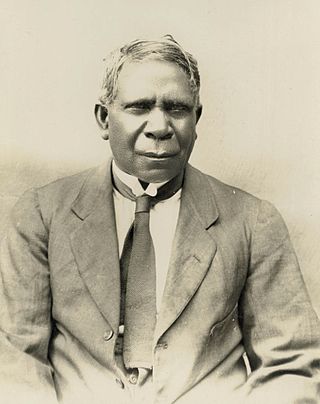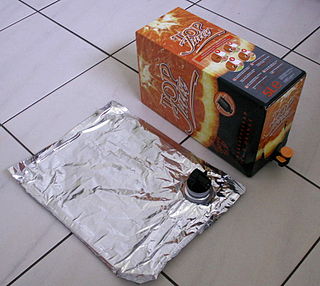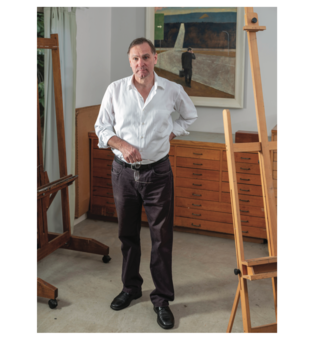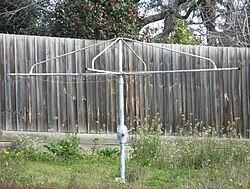
Emile Berliner originally Emil Berliner, was a German-American inventor. He is best known for inventing the lateral-cut flat disc record used with a gramophone. He founded the United States Gramophone Company in 1894; The Gramophone Company in London, England, in 1897; Deutsche Grammophon in Hanover, Germany, in 1898; and Berliner Gram-o-phone Company of Canada in Montreal in 1899. Berliner also invented what was probably the first radial aircraft engine (1908), a helicopter (1919), and acoustical tiles (1920s).

The Adelaide–Darwin rail corridor consists of the 2975-kilometre (1849-mile) long 1435 mm standard-gauge main line between the South Australian capital city of Adelaide and the Northern Territory capital of Darwin, and the lines immediately connected to it. Preceded by a number of other shorter railways, a transcontinental line through to Darwin was only fully realised in 2004, when the final link from Alice Springs was opened. The line is used by interstate freight trains operated by Aurizon and by The Ghan passenger train operated by Journey Beyond.

Bell Textron Inc. is an American aerospace manufacturer headquartered in Fort Worth, Texas. A subsidiary of Textron, Bell manufactures military rotorcraft at facilities in Fort Worth, and Amarillo, Texas, USA as well as commercial helicopters in Mirabel, Quebec, Canada.

A clothes line, also spelled clothesline, also known as a washing line, is a device for hanging clothes on for the purpose of drying or airing out the articles. It is made of any type of rope, cord, or twine that has been stretched between two points, outdoors or indoors, above ground level. Clothing that has recently been washed is hung over the line to dry, held in place using clothes pegs or clothespins. Washing lines are attached either from a post or a wall, and are frequently located in back gardens, or on balconies. Longer washing lines often have props holding up the mid-section so the weight of the clothing does not pull the clothesline down to the ground.
Dremel is a multinational brand of power tools, focusing on home improvement and hobby applications. Dremel is known primarily for its rotary tools, such as the Dremel 3000, 4000 and 8200 series, which are similar to the pneumatic die grinders used in the metalworking industry by tool or moldmakers. Dremel later expanded its product range and now produces butane tools, benchtop and hand-held saws and oscillating tools. The company was purchased by Robert Bosch GmbH in 1993, and is now a division of the Robert Bosch Tool Corporation.

Dunlop is a suburb of the Belconnen district of Canberra, located within the Australian Capital Territory, Australia. Dunlop is at the far north-west edge of Canberra, near the border with the state of New South Wales. Approximately 11.6 kilometres (7.2 mi) north-west of the city, Dunlop is next to the suburbs of Fraser, Charnwood and Macgregor. At the edge and within Dunlop lies the Canberra Nature Park called Dunlop Grasslands Nature Reserve, West Belconnen Ponds, Jarramlee Pond and Fassifern Pond which are part of the Ginninderra Catchment.

IP Australia is an Australian Government agency, responsible for administering intellectual property law in Australia. The agency manages the registration of patents, trade marks, registered designs and plant breeder's rights in Australia. The agency sits under the Department of Industry, Science and Resources. From 1904 until 1998, the responsible government agency was called the Australian Patent Office (APO), which is now a division within IP Australia. The headquarters are located at Discovery House in Canberra, Australia, with offices in some capital cities. IP Australia has been an International Searching Authority (ISA) and International Preliminary Examining Authority (IPEA) for patent applications filed in accordance with the Patent Co-operation Treaty since 31 March 1980. Australia is also a member of the Madrid system for trade marks, the Paris Convention for designs and the UPOV for plant breeder's rights.
Griffon Corporation is a multinational conglomerate headquartered in New York City. The company conducts its operations through five subsidiaries: The AMES Companies, ClosetMaid, Clopay Building Products, and CornellCookson. Griffon has been publicly traded since 1961 and is listed on the New York Stock Exchange as a component stock of the S&P SmallCap 600, S&P Composite 1500, and Russell 2000 indices.
Joy Mangano is an American inventor and entrepreneur known for inventions such as the self-wringing Miracle Mop. She was the president of Ingenious Designs, LLC, and appeared regularly on the U.S. television shopping channel HSN until her departure in late 2018. Mangano is the founder and CEO of Clean Boss, a company that develops and sells cleaning products.

Arthur Elwood Drumm was an American inventor, environmentalist, military subcontractor, and industrialist of the modern street sweeping broom industry, as well as a publisher.

This is a timeline of Australian inventions consisting of products and technology invented in Australia from pre-European-settlement in 1788 to the present. The inventions are listed in chronological order based on the date of their introduction.
George A. Thompson (1921–2000) was an American inventor and businessman who held many patents in the pumping industry and is credited with the invention of the rotary pump. His many inventions and pioneering spirit led to the creation of Thompson Pump & Manufacturing company.

The Thor washing machine was the first electric clothes washer sold commercially in the United States. Produced by the Chicago-based Hurley Electric Laundry Equipment Company, the 1907 Thor is believed to be the first electrically powered washer ever manufactured, crediting Hurley as the inventor of the first automatic washing machine. Designed by Hurley engineer Alva J. Fisher, a patent for the new electric Thor was issued on August 9, 1910, three years after its initial invention.

Hills Limited (Hills) was a publicly listed industrial conglomerate company (ASX:HIL) with branches across Australia and New Zealand. Hills is the evolution of Hills Hoist Ltd, the company founded by Lance Hill and Harold Ling in 1948 to manufacture the Hills Hoist clothesline. Hills was a value-added distributor of security and surveillance systems, IT infrastructure, nurse call and patient engagement technology. In 2023, Hills went into voluntary administration.

Goon of Fortune, sometimes called Wheel of Goon, is an Australian drinking game involving cheap cask wine, played between any number of people. The name is a spoof on the TV show Wheel of Fortune.

Gilbert Toyne was an Australian inventor.
Motion Picture Patents Co. v. Universal Film Mfg. Co., 243 U.S. 502 (1917), is United States Supreme Court decision that is notable as an early example of the patent misuse doctrine. It held that, because a patent grant is limited to the invention described in the claims of the patent, the patent law does not empower the patent owner, by notices attached to the patented article, to extend the scope of the patent monopoly by restricting the use of the patented article to materials necessary for their operation but forming no part of the patented invention, or to place downstream restrictions on the articles making them subject to conditions as to use. The decision overruled The Button-Fastener Case, and Henry v. A.B. Dick Co., which had held such restrictive notices effective and enforceable.

Peter Serwan is an Australian artist and educator based in Adelaide, South Australia. Serwan works mostly in the medium of oil paint however he is also a fine printmaker. Serwan is known for his paintings' focus on suburban life and the human experience. His artwork features both impressionist works as well as key figures from his own like including family and friends. His works have been known to showcase the nuanced exploration between human existence and urbanization. Serwan has exhibited frequently in Australia and is represented in private and institutional collections.
Ellen Elgin was an American inventor of a clothes wringer.















